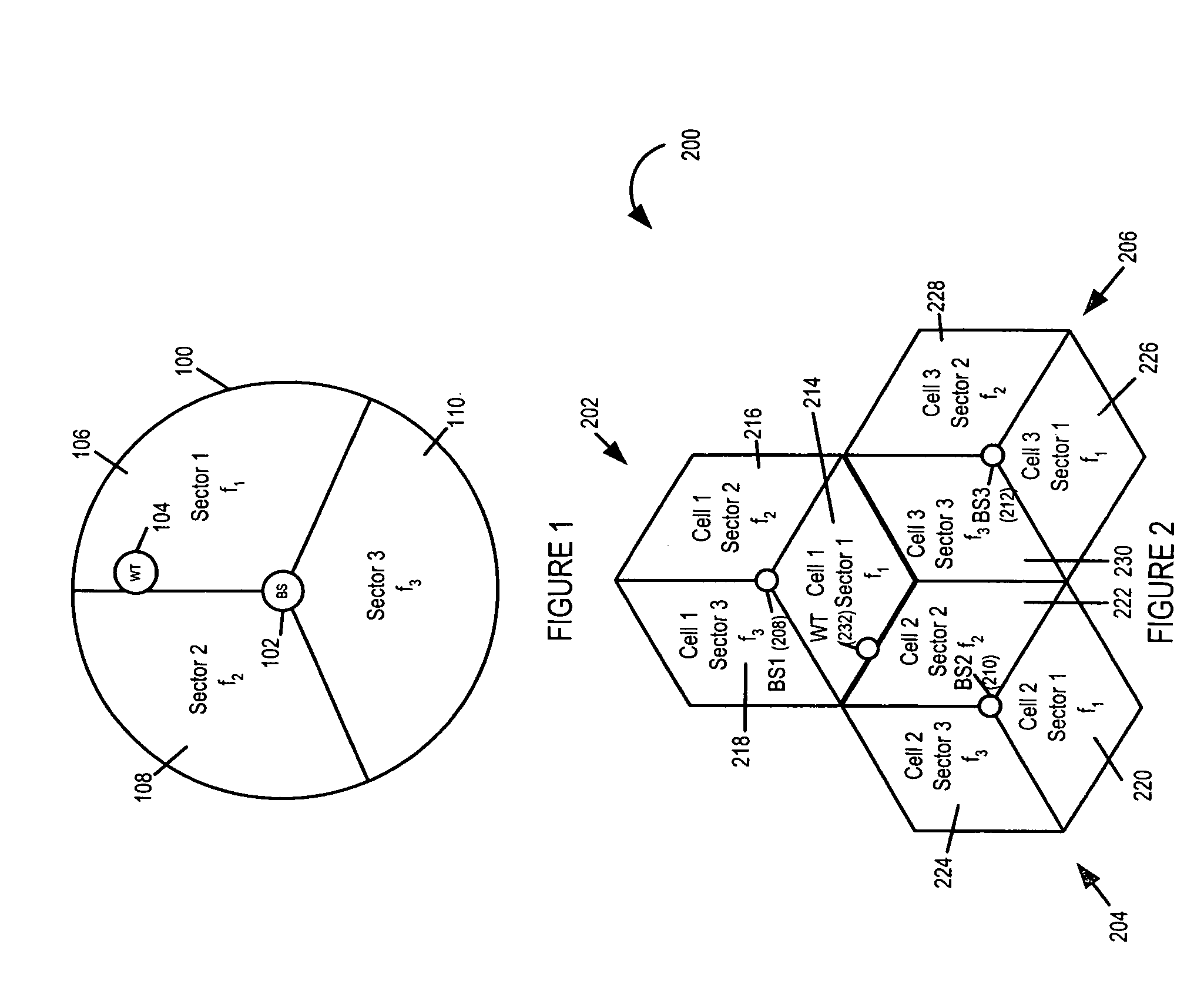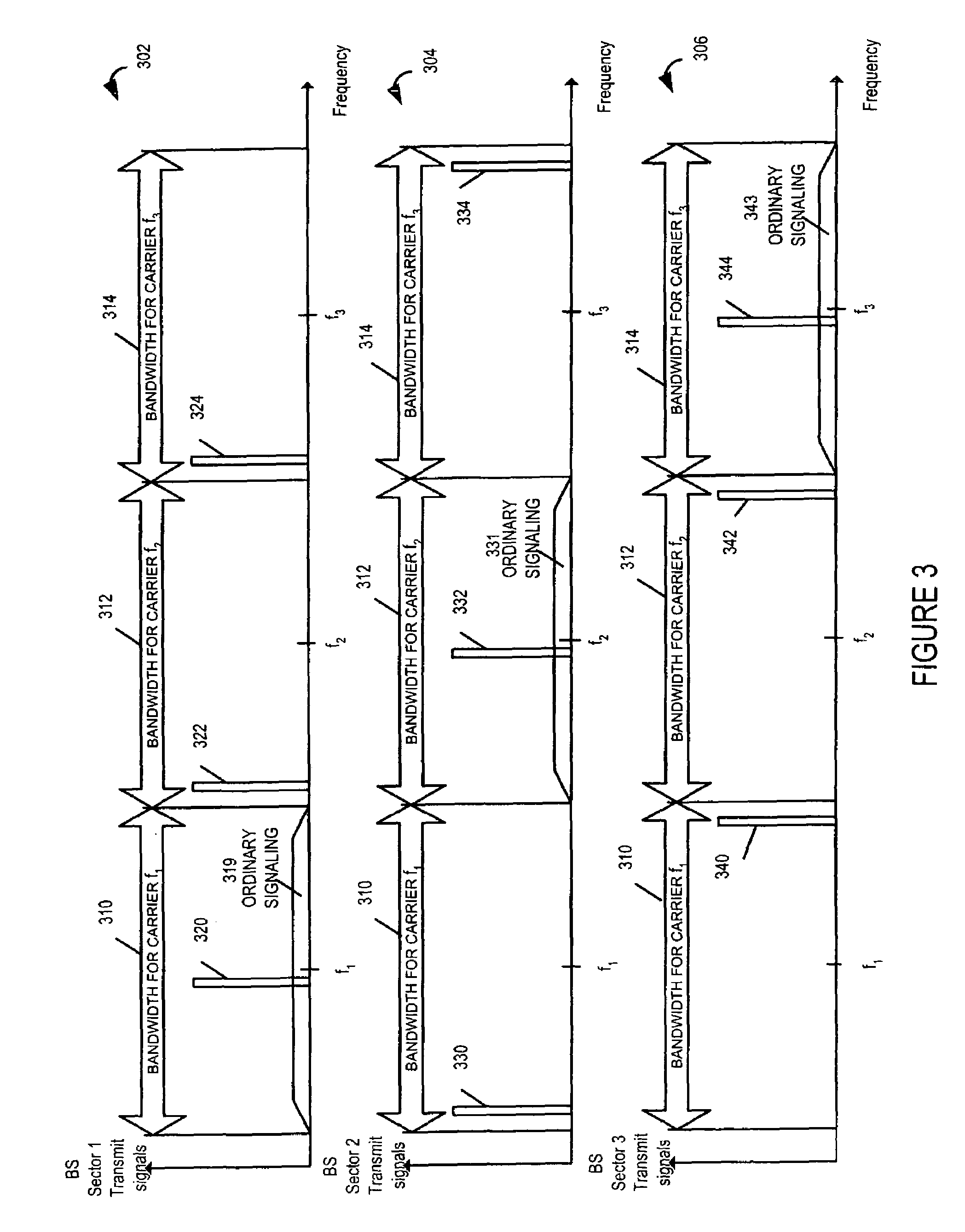Methods and apparatus of improving inter-sector and/or inter-cell handoffs in a multi-carrier wireless communications system
a multi-carrier wireless communication and inter-cell technology, applied in the field of communication systems, can solve the problems of multiple parallel receiver filter chains that are often too expensive to be practical, and the receiver may take a long time to switch between carrier frequencies,
- Summary
- Abstract
- Description
- Claims
- Application Information
AI Technical Summary
Benefits of technology
Problems solved by technology
Method used
Image
Examples
Embodiment Construction
[0025]Each cell includes a base station which transmits different signals into each sector of a cell. Each cell includes one or more sectors. Separate antenna and / or transmitter may be provided for each sector of a cell. The base station, in accordance with the invention, transmits multiple beacon signals, e.g., at different times, from each sector of a cell. One or more beacon signals are normally transmitted within the frequency band used by the particular sector to communicate information, e.g., user data and / or control information intended for specific individual wireless terminals, to wireless terminals within the sector. User data may include text data, voice data and / or other types of user application data. Such beacon signals can be used to convey information, e.g., a sector identifier, a cell identifier, and / the carrier frequency used in the sector. In accordance with the present invention, the base station uses a sector transmitter to periodically transmit a beacon signal ...
PUM
 Login to View More
Login to View More Abstract
Description
Claims
Application Information
 Login to View More
Login to View More - R&D
- Intellectual Property
- Life Sciences
- Materials
- Tech Scout
- Unparalleled Data Quality
- Higher Quality Content
- 60% Fewer Hallucinations
Browse by: Latest US Patents, China's latest patents, Technical Efficacy Thesaurus, Application Domain, Technology Topic, Popular Technical Reports.
© 2025 PatSnap. All rights reserved.Legal|Privacy policy|Modern Slavery Act Transparency Statement|Sitemap|About US| Contact US: help@patsnap.com



